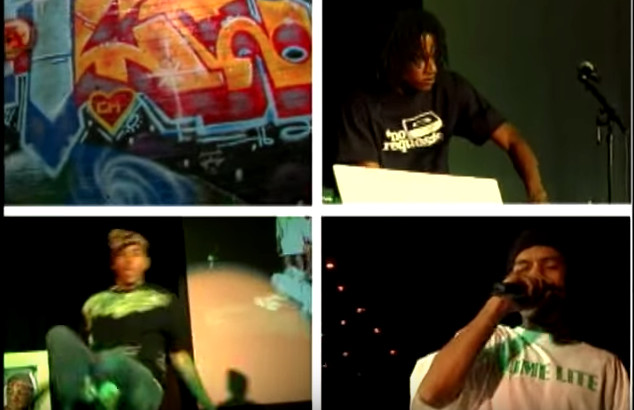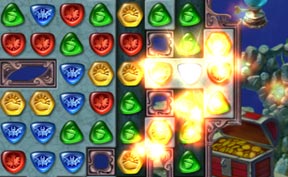

The tile puzzles got larger as I played through the levels and on occasion I lost track of where I was supposed to be heading. Completing chains also charges up the power ups. Chains and explosions are important because they each clear away a layer of ground from the play area enabling the energy to flow. The longer the chain the more points are scored and the bigger the explosion at the end. This is done by using the mouse to construct chains of tiles of the same colour. The objective of these puzzles is to enable the flow of magic elemental energy to flow from the start point through to the end. These are timed so the faster they are completed the higher the score at the end. The game then gets into the tile matching puzzles which are the main part of the game. I enjoyed these puzzles, they were a pleasant diversion, but there's only one such puzzle per book. These puzzles were neatly handled, slickly done and surprisingly challenging. When all the objects have been found and used you're rewarded with the key that opens the book. When the grass is cut a missing piece for another object may be revealed. These objects are then used with hot-spots on the screen, so for example if the first object completed was a scythe it could be used with some long grass. This consists of finding the parts to complete four objects. This requires a key but to get the key you first have to solve a hidden object puzzle. First the book must be unlocked, then each of the four cards must be released / repaired/ freed (or something like that).īefore a book can be played it must be opened. The four books must be played in order and each follows the same format. There are four power ups, four colours for the tiles, and four hidden objects to find. Each book is split into four sections and each section contains four tile puzzles. This is split into for books, one for each element. The number four features prominently in this game. There's a lot of talk about fairies and dragons and such but none of it is really relevant to the game.

The story is about how people lived in a peaceful valley governed by the magic of the four elements but they got greedy and killed all the animals and chopped down all the trees thus disturbing the balance of nature, or something like that. It took around 18 hours to get all the way through and that includes playing a couple of levels twice. I've played it through in just a few days and it has been an enjoyable but short experience.


4 ELEMENTS 2 GAMEPLAY PS3
The PS3 version includes the ability to replay levels, leader board support, and an up-gradable castle to represent the player's leader board score. The spade destroys a single tile, the bomb explodes several tiles, the swap changes the position of two tiles and the reshuffle reorganizes the whole grid. There are slots at the bottom of the screen for the four power-ups, each being charged by matches of its corresponding color. After solving a group, a couple of similar cards with the character appear side-by-side, and the player must click on the differences between the two. The levels are organized inside the books as sub-groups related to a typical fantasy character (like elves, dragons, dwarfs, etc). After the objects are assembled, they have to be used to solve the room puzzle and reach the book key. At the start of each book, a screen comes up with scattered pieces of objects that must be collected. The levels are divided in four books representing the four elements. The game screen follows the energy as it flows, moving with it until it is blocked again. The objective of each level is to break the background by making matches over it, allowing the elemental energy, green sap for the earth level, lava for the fire element, wind & water for the others, to flow freely. The player has to click and drag over groups of three or more tiles to remove them. The levels are labyrinths with grids of multi-colored tiles. 4 Elements is a tile-matching game with elements from hidden object titles.


 0 kommentar(er)
0 kommentar(er)
